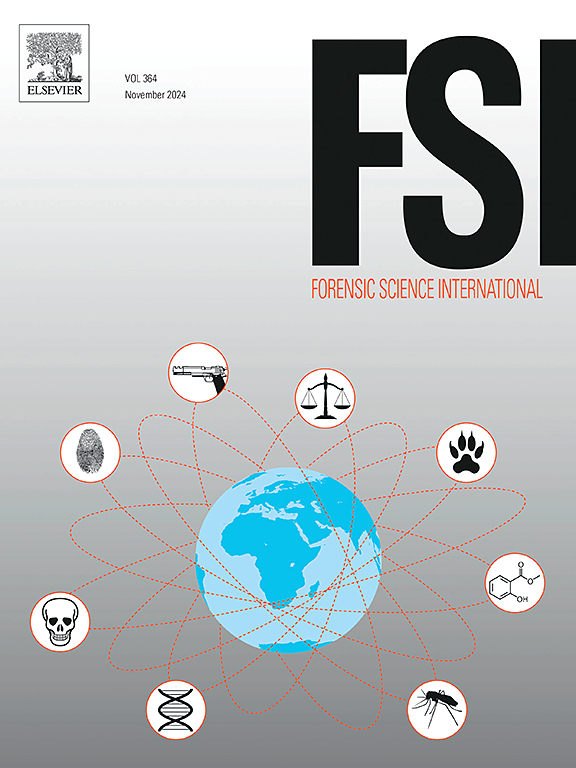基于残差神经网络的撞击飞溅和飞点自动识别。
IF 2.2
3区 医学
Q1 MEDICINE, LEGAL
引用次数: 0
摘要
在刑事调查中,由于形态上的相似性,区分撞击飞溅和苍蝇斑点是一个挑战。传统的血迹模式分析(BPA)方法严重依赖于专业检验人员的专业知识,这可能导致鉴定效率低、误判率高、易受外界干扰等局限性。为了提高识别撞击飞溅和蝇点的准确性和科学严谨性,本研究将人工智能技术应用于图像识别和迁移学习。利用仿真实验得到的两种类型的血迹作为数据集,采用预训练的神经网络ResNet-18进行特征提取。替换原有的全连通层,引入一个维数为2的新全连通层来满足任务要求。结果表明,基于ResNet-18的迁移学习网络模型在形态识别上达到了93 %的最高准确率。目的是协助犯罪现场调查人员和双酚a分析人员方便、快速、准确地识别杀人现场的血迹,从而为现场重建提供科学证据,推动双酚a向智能化方向发展。本文章由计算机程序翻译,如有差异,请以英文原文为准。
Automated identification of impact spatters and fly spots with a residual neural network
In criminal investigations, distinguishing between impact spatters and fly spots presents a challenge due to their morphological similarities. Traditional methods of bloodstain pattern analysis (BPA) rely significantly on the expertise of professional examiners, which can result in limitations including low identification efficiency, high misjudgment rates, and susceptibility to external disturbances. To enhance the accuracy and scientific rigor of identifying impact spatters and fly spots, this study employed artificial intelligence techniques in image recognition and transfer learning. Two types of bloodstains obtained from simulation experiments were utilized as datasets, and a pre-trained neural network, ResNet-18, was employed for feature extraction. The original fully connected layer was replaced, and a new fully connected layer with a dimensionality of 2 was introduced to fulfil the task requirements. The results demonstrate that the transfer learning network model, based on ResNet-18, achieved a maximum accuracy of 93 % in morphologically identifying impact spatters and fly spots. The objective is to assist crime scene investigators and BPA analysts to identify bloodstains at homicide scenes conveniently, rapidly and accurately, thereby furnishing scientific evidence for scene reconstruction and advancing BPA toward intelligent practices.
求助全文
通过发布文献求助,成功后即可免费获取论文全文。
去求助
来源期刊

Forensic science international
医学-医学:法
CiteScore
5.00
自引率
9.10%
发文量
285
审稿时长
49 days
期刊介绍:
Forensic Science International is the flagship journal in the prestigious Forensic Science International family, publishing the most innovative, cutting-edge, and influential contributions across the forensic sciences. Fields include: forensic pathology and histochemistry, chemistry, biochemistry and toxicology, biology, serology, odontology, psychiatry, anthropology, digital forensics, the physical sciences, firearms, and document examination, as well as investigations of value to public health in its broadest sense, and the important marginal area where science and medicine interact with the law.
The journal publishes:
Case Reports
Commentaries
Letters to the Editor
Original Research Papers (Regular Papers)
Rapid Communications
Review Articles
Technical Notes.
 求助内容:
求助内容: 应助结果提醒方式:
应助结果提醒方式:


